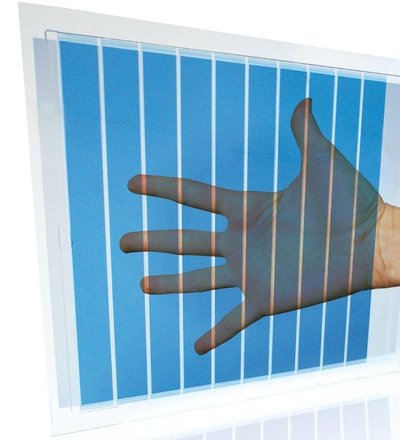Transparent solar cells reach 7.2% efficiency
German organic solar film producer Heliatek GmbH says it has achieved a new record in transparent solar cell efficiency: transparency levels of up to 40% with an efficiency of more than 7%.
The company currently holds the world record of 12% cell efficiency for opaque organic solar cells. Heliatek plans to supply its transparent HeliaFilm to glass manufacturers for both building integration (BIPV) and car roofs.

“The transparency of our products is at the core of our market approach. Our HeliaFilm is customised to meet our partners’ specific needs,” said Thibaud Le Seguillon, Heliatek CEO.
“We are a component supplier and this component is a film which can combine transparency and energy generation. This unique combination widens our market potential.”
Both applications use tinted glass to reduce glare, which can be done by applying film - so changing the film to one that generates electricity as well is a drop-in for manufacturers, Heliatek says. Using HeliaFilm in glass car roofs will not only generate energy, but will also allow the car manufacturers to claim eco-innovation credits towards CO2 emission goals. Architectural glass panels and windows incorporating HeliaFilm will enable electricity to be discretely generated on the outside envelope of a building.
The HeliaFilm cells reached an efficiency record of 7.2% with a 40% light transparency. The measurement follows standard testing conditions using a white background. The company says its HeliaFilm cells achieve the same efficiency as its opaque cells (which have achieved 12% efficiency), since the partial transparency allows the usage of only 60% of the light for the energy harvesting.
Depending on application, the balance between light let through and electricity generated can be adjusted, the company says. The production of transparent HeliaFilm is possible with the introduction of transparent conductive layers at the front- and back-side of the solar cells.
The production of HeliaFilm is based on small molecules (oligomers). These oligomers are deposited at low temperatures in a roll-to-roll vacuum process. Their selective absorption of the solar spectrum targets different colours and transparency to convert sunlight into electricity
Aust solar farms to deploy Canadian anti-hail tech
Australian energy retailer Flow Power is teaming up with Canadian Solar to deploy the...
Praise for Senate committee report into electrification
Rewiring Australia has welcomed a report into residential electrification carried out by a...
Endeavour Energy launches new community battery program
76 new batteries will be delivered across the Illawarra, South Coast, Greater Western Sydney,...




